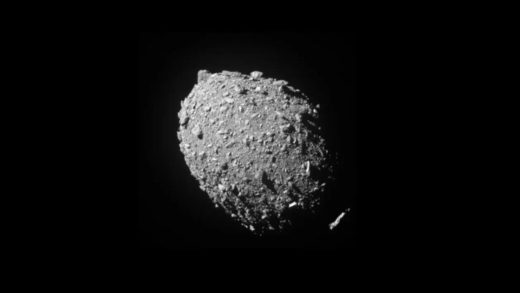A new FRB signal from a binary system detected

Key Points:
- Astronomers have detected a mysterious fast radio burst from a binary system.
- The magnetic environment of the radio burst lies just one astronomical unit (the distance between the Earth and the sun) away from its source.
- They discovered that the burst originated from a barred spiral galaxy, which is rich in metal and is around the size of the Milky Way.
- The study should encourage further searches for FRBs from Be star/X-ray binaries, the authors said.
Deepening the mystery of the sources of these deep space phenomena, astronomers say they have detected a mysterious fast radio burst (FRB) signal from a binary system.
FRB
Fast radio bursts, or FRBs, are tremendous radio wave emissions that last only a fraction of a millisecond to a few milliseconds and emit the same or more energy as the sun does in a whole year.
According to recent research, some FRBs may come from magnetars, neutron stars with incredibly strong magnetic fields. A 2020 study found that a magnetar was linked to a fast radio burst detected in the Milky Way.
This quandary drove an international team of scientists to study what it could learn from observations of nearly 1,900 bursts from an active fast radio burst source outside our galaxy known as FRB 20201124A, according to the research published on September 21 in the journal Nature
New FRB
One of the most active known fast radio bursts, FRB 20201124A’s emissions lasted for 82 hours over a duration of 54 days in the spring of 2021. The Five-hundred-meter Aperture Spherical Radio Telescope, or FAST, located in China, is the largest radio telescope in the world and was employed to monitor it.
The study team was shocked to detect irregular, transient variations of the Faraday rotation measure, which measures the strength of the magnetic field and particle density around FRB 20201124A, over the first 36 days. According to astronomer and study coauthor Bing Zhang, a larger rotation value indicates a stronger, denser, or both magnetic field is present close to the radio burst’s source, while a lower measure suggests the opposite.
Zhang says this is not reflective of the beginning of the FRB’s (life span) and the FRB source has been there for a long time but has been dormant most of the time. “It occasionally wakes up (this time for 54 days) and emits a lot of bursts,” said Zhang.
The measures went up and down during that time period, then stopped during the last 18 days before the FRB dampened, “suggesting that the magnetic field strength and/or density along the line of sight in the vicinity of the FRB source are varying with time,” Zhang added. “It suggests that the environment of the FRB source is dynamically evolving, with rapidly changing magnetic fields or density or both.”
“I equate it to filming a movie of the surroundings of an FRB source, and our film revealed a complex, dynamically evolving, magnetized environment that was never imagined before,” Zhang said in a news release.
FRB’s potential source structure
According to another study published on September 21 in the journal Nature Communications, a physical model that a different team of researchers made based on the observations of FRB 20201124A proposes that a binary system with a magnetar and a Be star, a star that is hotter, larger, and rotates more rapidly than the sun, 8,480 light-years away, is where the FRB originated.
The scientists discovered that the complex, magnetized environment of the radio burst was lying just one astronomical unit (the distance between the Earth and the sun) away from its source.
Using the 10-meter Keck telescopes on Mauna Kea in Hawaii, they also discovered that the burst originated from a barred spiral galaxy, which is rich in metal and is around the size of the Milky Way. According to Subo Dong, an associate professor at the Kavli Institute for Astronomy and Astrophysics at Peking University and co-author of the Nature study, the radio burst’s source is located between the galaxy’s spiral arms where little significant star formation is occurring, making it less likely that the origin is just a magnetar.
According to Zhang, such an environment is not straightforwardly expected for an isolated magnetar. “Something else might be in the vicinity of the FRB engine, possibly a binary companion,” Zhang said in a news release.
Application
The modeling study should encourage further searches for fast radio burst signals from Be star/X-ray binaries, the authors said.
Stating that these observations brought us back to the drawing board, Zhang added, “It is clear that FRBs are more mysterious than what we have imagined. More multi-wavelength observational campaigns are needed to further unveil the nature of these objects.
Auto Amazon Links: No products found.


